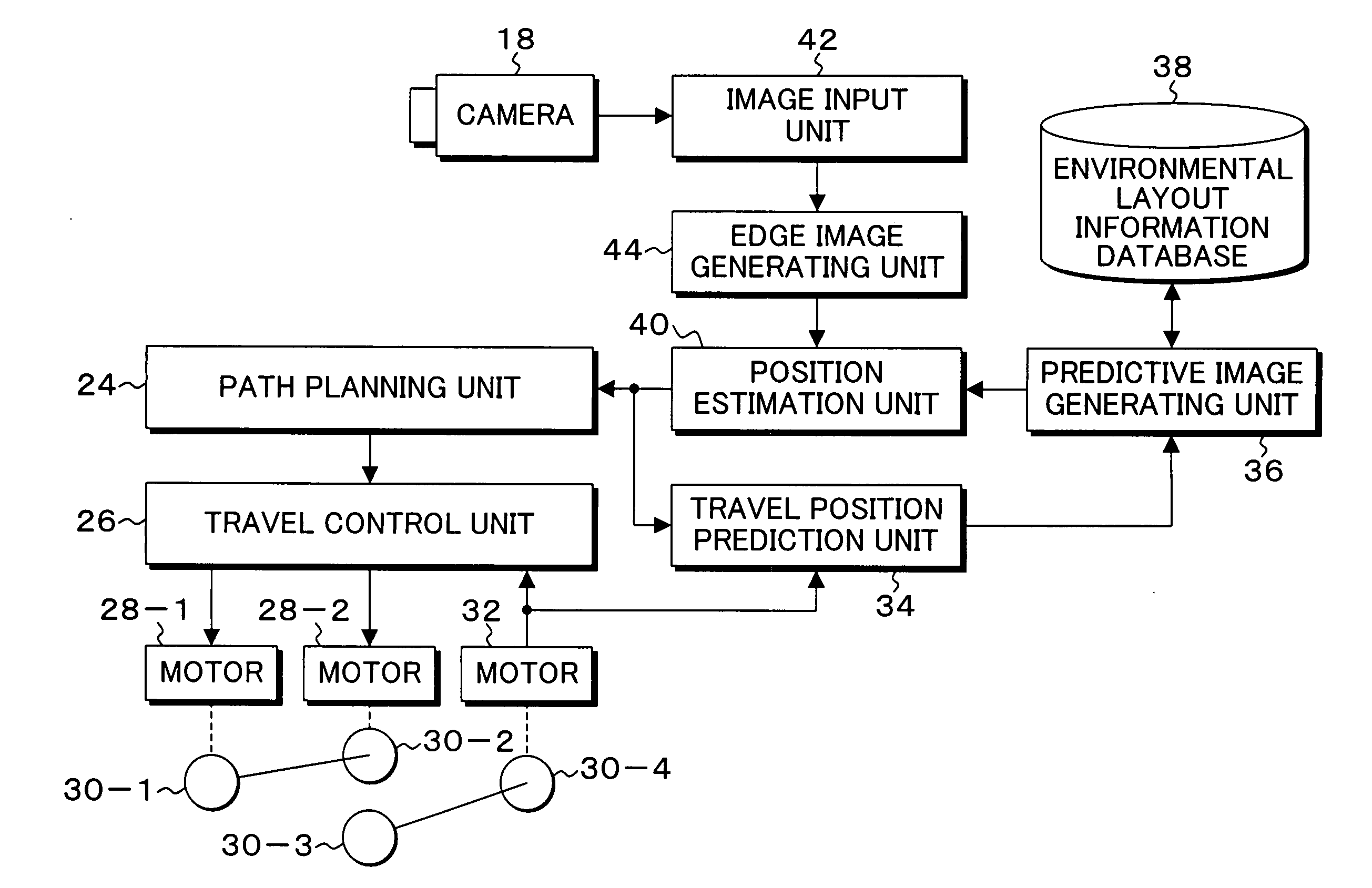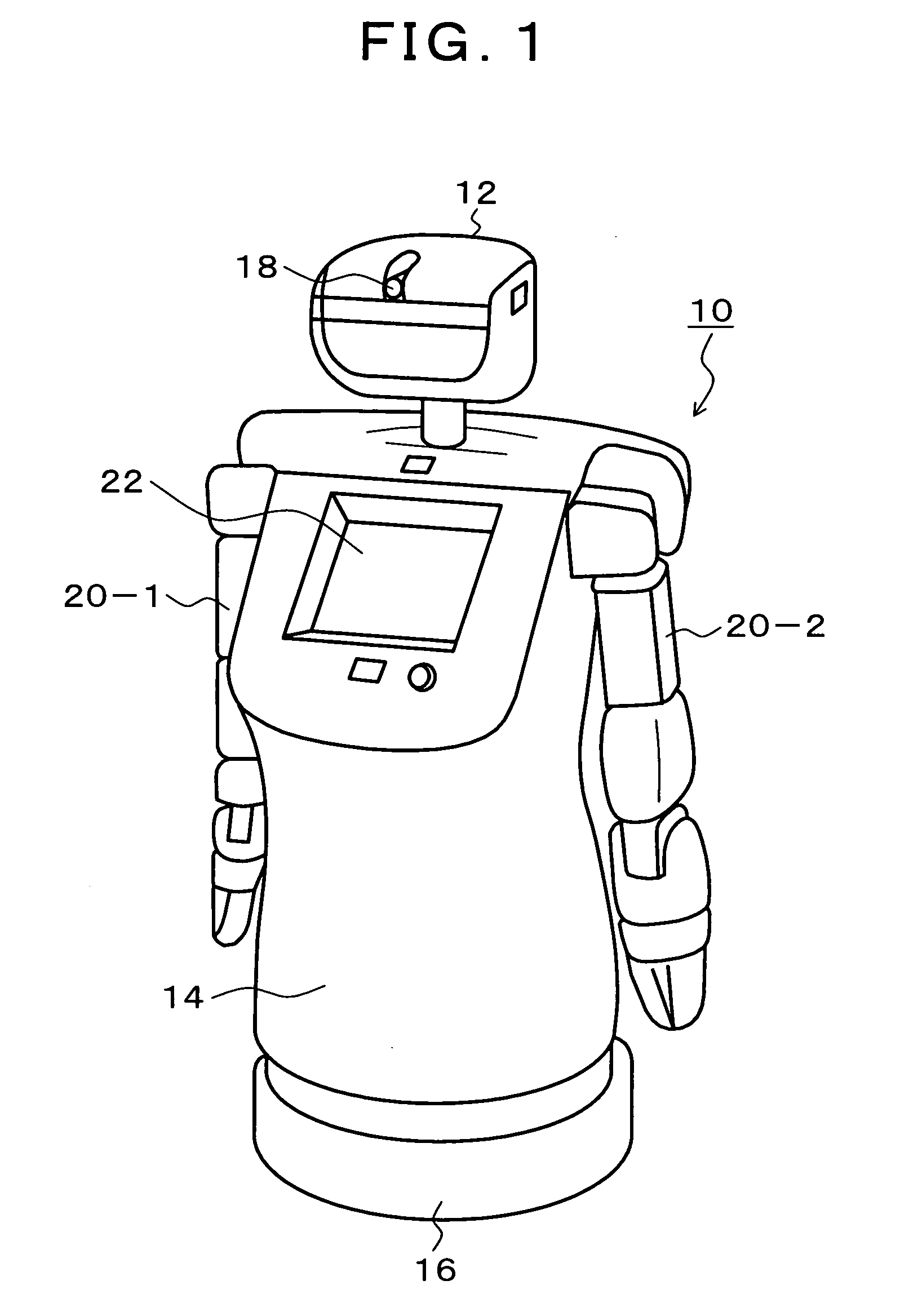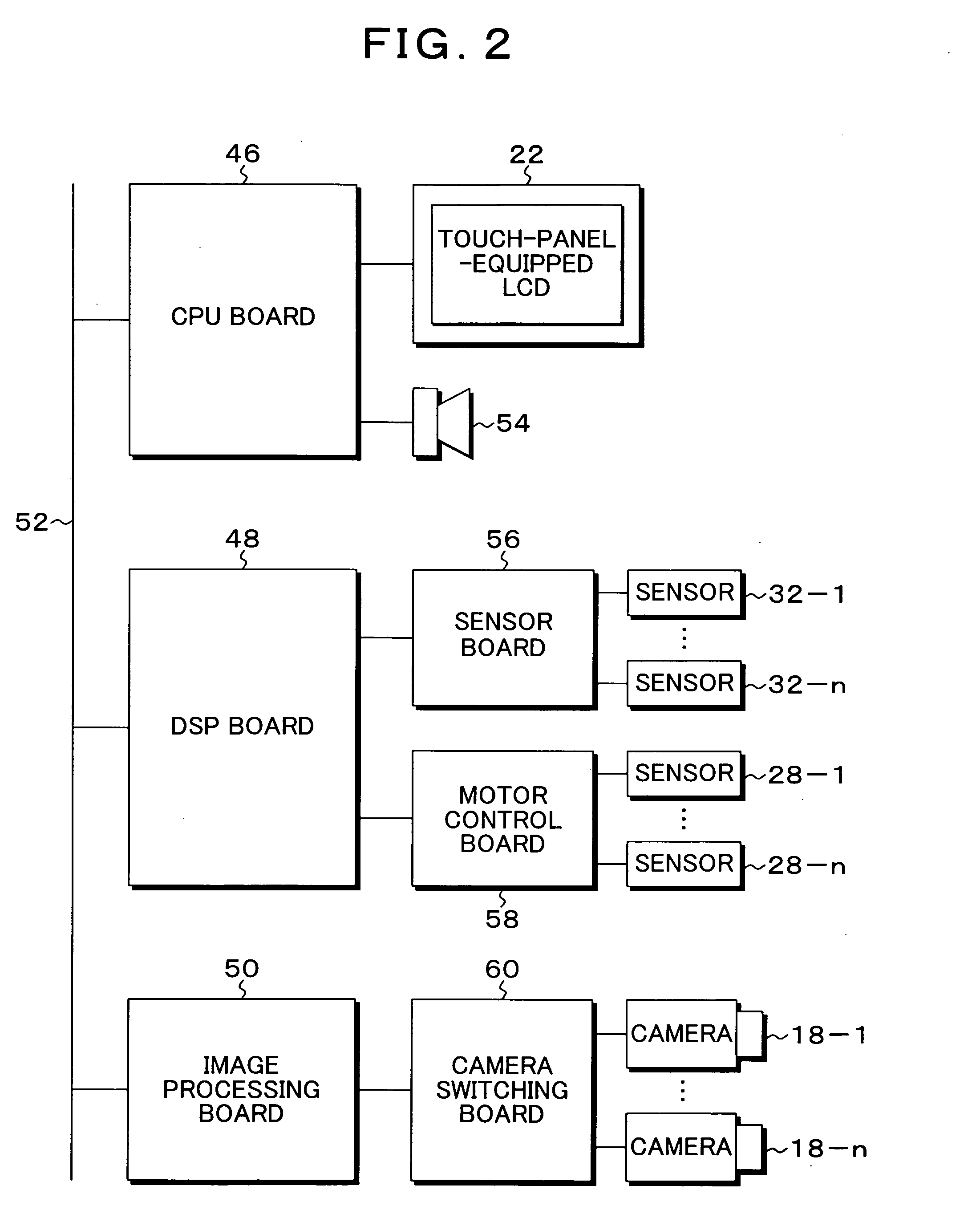Mobile robot, and control method and program for the same
a robot and mobile technology, applied in the field of mobile robots and control methods and program for the same, can solve the problems of increasing cost, increasing labor hours and time, increasing errors, etc., and achieve the effect of enhancing the accuracy of estimation, facilitating and accurately carrying out estimation, and enhancing the accuracy of travel positions
- Summary
- Abstract
- Description
- Claims
- Application Information
AI Technical Summary
Benefits of technology
Problems solved by technology
Method used
Image
Examples
Embodiment Construction
[0051]FIG. 1 is an explanatory diagram of an embodiment of a mobile robot according to the present invention. In FIG. 1, the mobile robot 10 of the present embodiment is composed of five units, that is, a head unit 12, a body 14, a moving unit 16, a left arm 20-1, and a right arm 20-2. The size of the mobile robot 10 is about 60 cm in diameter when horizontally viewed and is about 130 cm in height. The head unit 12 can turn horizontally relative to the body 14, and a camera 18 using imaging devices such as CCDs is directed to the front and attached to the head unit 12. The sight-line direction of the camera 18 can be adjusted by turning the head unit 12. If a plurality of cameras having different sight-line directions are mounted on the head unit 12, the sight directions can be instantly changed by switching the cameras without using a pan / tilt mechanism. In the left arm 20-1 and the right arm 20-2, joints having four degrees of freedom with which hands can be moved to arbitrary pos...
PUM
 Login to View More
Login to View More Abstract
Description
Claims
Application Information
 Login to View More
Login to View More - R&D
- Intellectual Property
- Life Sciences
- Materials
- Tech Scout
- Unparalleled Data Quality
- Higher Quality Content
- 60% Fewer Hallucinations
Browse by: Latest US Patents, China's latest patents, Technical Efficacy Thesaurus, Application Domain, Technology Topic, Popular Technical Reports.
© 2025 PatSnap. All rights reserved.Legal|Privacy policy|Modern Slavery Act Transparency Statement|Sitemap|About US| Contact US: help@patsnap.com



